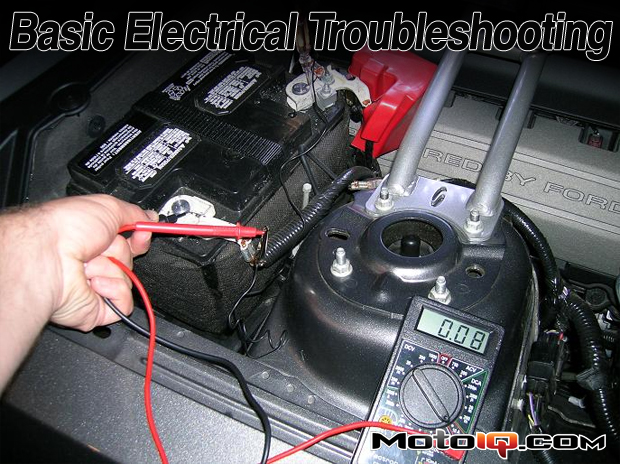,
Troubleshooting Low Voltage
One time I was having a problem with the fuel pump on my car. The pump simply would not turn on, no matter what I did. I crawled under the vehicle, disconnected the fuel pump, and measured the voltage at the fuel pump’s plug. It was right at 12 V, so I figured the fuel pump was broken and needed to be replaced. After blowing $100 or so on a brand new in-tank 255 liter/hour pump and spending most of an afternoon reinstalling it, I went to start the car, but the fuel pump still wasn’t working!
To make a long story short, it turns out that there was nothing wrong with the original pump. There was a high-resistance connection under the dash causing the fuel pump to not get enough voltage. “But wait!” you say. ” You already measured the voltage!” I did, but I missed something.
Remember how last time I talked about hidden resistances in wires and connections that can prevent things from getting enough power? That was the problem I was having with my fuel pump.
 |
|
Rw represents the combined resistance of wires and electrical connections. R, in this case, was my fuel pump. |
A voltmeter allows only a very, very small amount of current to flow through it. For our purposes, we can assume that this current is simply zero. Because no current is flowing (I = 0), Ohm’s law tells us that hidden resistance has no voltage drop across it. So the DMM thinks that full voltage is available to the fuel pump!
 |
| No current equals no voltage drop across Rw, so the DMM reads full voltage. |
So how can you troubleshoot this problem without blowing money on replacing something that might not need to be replaced? The answer is to use something to measure voltage that will pull some amount of current and thus cause a voltage drop across that hidden resistance. The test light that we talked about first could be used, but it pulls a very small amount of current. (That small amount probably wouldn’t be enough to test a fuel pump circuit, but it could be used to test a sensor circuit after the computer has been removed.) We need a more powerful, more manly test light.
You can build a high-current test light by using a few things from the autoparts store:
- Sealed-beam lightbulb (the kind used on cars from the ’70s)
- In-line 20-amp fuse
- Alligator clips
- Wire
 |
|
More power! (Tim “The Tool Man” Taylor would be proud.”) Bonus points for making yours look as ghetto as possible. |
This puppy is equipped with a 50-watt light bulb that will pull a little over 4 amps. Plugging this into a circuit with a good connection will make the light shine brightly. If the circuit has a bad connection somewhere (like my fuel pump did), the light will be dim (or not light up at all).
Make sure that you only use this more-powerful test light on high-current circuits (such as fuel pumps, electric fans, and starter motors). Using it on a circuit designed for lower currents will probably blow a fuse and just complicate things.
An added bonus of using this test light is that you can now use your DMM to accurately measure the voltage at the terminals of the light bulb. This is useful if you can’t tell whether or not the bulb is dim. If you’ve got less than full battery voltage at the light bulb’s terminals, you’ve got a bad connection somewhere.
I hope that gave you a little more confidence in troubleshooting electrical problems in your vehicles and some ideas of how to approach looking for problems



